ANC 220 - Week 5 - 7
- Ryan Mitten
- Mar 26, 2017
- 13 min read
PREFACE
There's a lot of text going through the last few weeks - if you just want to see work scroll past it.

First of all, let me apologise, Phil. I can't necessarily make up for the last couple of weeks, but I'll try and cover all the important bits here.
The last few weeks have been a blur. Seriously. I find myself at my desk all day, every day that I'm not behind a different desk at my job. Life has become quite monotonous and stressful however, I can see the light at the end of the tunnel...
My mantra over the last 2 weeks specifically, has been that "I'm already half way there"; in relation to the time passed in the current trimester. In so far that I've come to the mid way point, I just need to make it another 6 weeks. I realise full well that the second half of the Tri will likely see the threads come away, and I say this with specificity to the Studio 2/3 project. It's not that I doubt our work flow, this is more so a presumption based upon the schooling I've done in the past. This isn't my first time in a large scale project and I know that when crunch time comes - and it will - those of us who are prepared will still feel the brunt of the work left over by those who aren't. Either way: you're kinda screwed. So it's in situations like this that I like to take a deep breath, and recenter myself.
So what's causing all this stress and time pressure? Simply put, there's a large amount of deliverable work to complete and the implication is that I want all that work to be at the best of my abilities. I'm not here simply to Pass after all, I'm here so that by the end, I'll have potential job opportunities with businesses I'd actually like to work with. The math here is then: work X quality = lots of time.
How have I been spending my time? Well as I said before, the last few weeks have been a daily grind of some project or another. These have included my CIU interdisciplinary project of which I'm the Team Leader - FYI we're creating a short film parody of the ridiculousness of today's mainstream media's mediation of violence and they're subsequent 'pointing the finger' at video games, film and tv. Then of course there's the Studio 2 + 3 film we're all working on. - This particular project has surprised me and for all the reasons that I spoke with Phil about in our meeting earlier this week: Such a large project usually means absolute disaster if there isn't a strict hierarchy of leaders who are able to delegate tasks properly, take onus upon themselves for planning and keep the project aligned with timelines. And to this end, and my great surprise, this has been the case. We're on time (so far) and the work that I'm seeing come from all directions in the class is of a quality that I hope we'll all be proud of in the end. Of course, there are those of us who aren't necessarily meeting the bar set by some others, but that's not my place to admonish - I can only hope that our leaders will discipline where appropriate so that at the end of the day, there aren't any hard feelings between students, as has been the case during Studio 1 last trimester. We'll all be stuck together again next Tri and so it's in our best interests to work together cohesively and that means pulling our weight.
Finally there's Nigel's class and holy hell has he decided to blast us with some work - the first few weeks we took it slow and I, along with some other students assumed that because of the nature of those preliminary classes, that Nigel's class was more of an add-on to our Studio unit. Then all of a sudden he wants 3D models fully rendered and a functional Rig built from scratch. The hours we have on Thursday are barely enough to get through the content for the deliverable and so time is consequently put aside each week to troubleshoot the issues that inevitably arise. But it's here that I feel that i need to point something out - and that is that the work load, as steep as it is, and I say this when comparing this Tri to the previous three, is still manageable with good time management, and that right there, is an issue for me. This is also something that I spoke with Phil about, and realistically, if I'm to be frank, the only issue I have currently. If I take a week starting Monday, I have my work roster for the week so I know which days I'll be out of the house. I know which days I have class and have a pretty good idea what work will be expected and covered in each class because of the week prior and so I attempt to create a to-do list for the work I have yet to produce and I try to schedule it all in around my calendar. this works in theory, but as I explained to Phil, I never quite hit each day perfectly. That is to say, if I set myself 10 things to do by the end of the week, and I know I have 2 days each week where I can comfortably be at my desk to study, then I'll try assign 5 things to each day. But more often than not, after that first day, only 3-4 things will get completed; this is because I've underestimated how long those tasks will take (typically my knowledge gaps with software is what slows me down as many hours can be spent trying to troubleshoot issues on my own). Therefore, the next day, I don't have 5 things to accomplish, but instead I have 6-7. This means that after those two days, I haven't completed enough tasks to stay on track. Then the following week of classes take place and I'm now 2-3 tasks behind and I'm already writing a new list for that week and i have to tac on those remaining tasks. This then becomes a terrible loop where I'm always taking a step forward and two steps back.
In an attempt to get over this hurdle, I realised that i need to learn when enough is enough - I've already made compromises in my life to accommodate for the time that I do have now to study, and I really cannot make anymore, so instead, I've decided that I have to set strict time limits for my work - if I'm working on a task, I give myself a set time when I put that task aside, no matter what stage it was at, and move onto the next one. that way I'll at least be working on multiple things instead of being stuck on one and postponing others. This isn't' ideal to be sure, because I'm not producing my best work, but that's life and I don't have anymore time left in the week.
So I've created a few things:
This model was based on a Mega Man figurine I picked up in Japan a couple of years ago. You can attach multiple heads to it so I picked one, knowing that I could customise him to have any expression I wanted in the texturing process. This was one I was really looking forward to because it blends my need to learn to texture more realistically but I also have some creative freedom to play around with the textures and paint the type of face that I want.

You can see the reference images I took. With each model, I'm trying to be better with my topology, so whenever possible, I'll try create the entire mesh out of a single poly - this mega man head is an example of this and thus proved to be quite challenging especially because of the number of polys needed for the helmet vs the polys needed for the face.

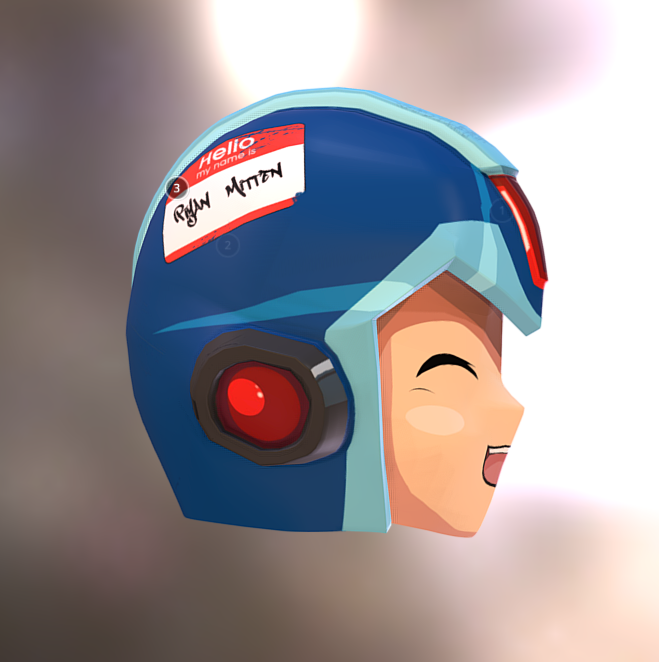

I had a lot of fun with this one even though I was juggling all three at the same time, I spent the longest time texturing this one (about 10 hours in a sitting). I realise that it wouldn't take an industry professional that long to texture this, but I'm still a student!
The next piece is a piece of technology: my personal computer mouse. I felt this would be a great chance to utilise different textures due to the different materials used in its construction: plastic, rubber, silicon etc.

Everything was going well with this piece during the modeling process until I smoothed everything out with sub divs and then I realised there were some irregularities with some of the curvature on the body of the mouse and around the buttons. I utlised a nifty trick Phil showed us by way of the lattice options in deformers but it seems that I was too late. In order to grab the parts that I needed, I had to generate a lot of lattice points (think 20x10x20), and I used a combination of soft selection and lattice points to try and fix the issues but it was much too convoluted. I knew I'd have to be clever in lighting to kinda hide those issues, and hopefully in the screens below I did a good job.
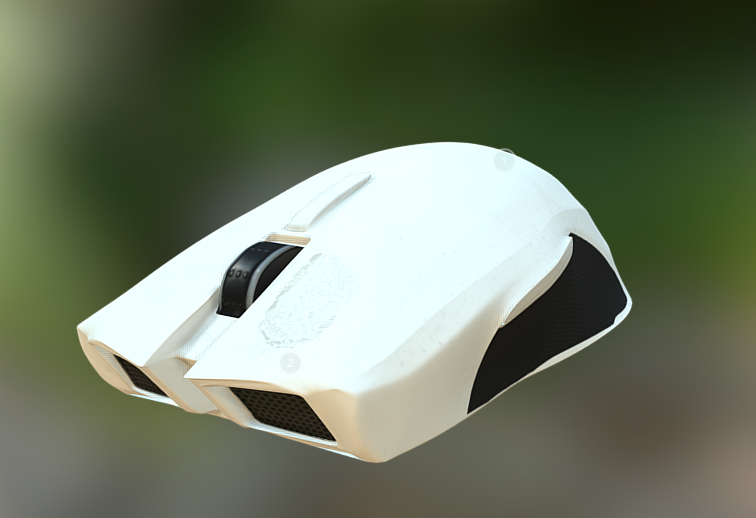
I used a lot of techniques for this texture. A combination of real life photos I took with my camera, google image searching, and a lot of painting in Photoshop to apply dirt and general wear and tear to the mouse.
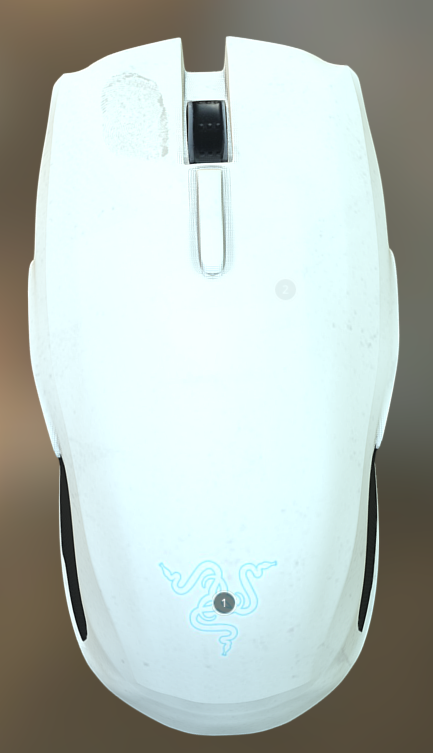
You can see here some of those irregularities I mentioned earlier - some of those hard edges are actually purposeful, such as the top most one closet to the logo, but not the rest of them running down the back to the bottom of the body. I know in a second pass at this I could do this much better, but this is where I had to leave it in order to get on with life.

When adding usage and a worn look to the mouse it proved a new challenge in: if the mouse is used and mottled with specks of dirt and grit, yet the materials are a combination of reflective maya materials, then how will the light play off the surface? Would it wash out the dirt? Or if I dropped spec and roll off and create a more matte look to emphasise the dirt and finger prints, will the mouse still look plastic or will it start to look like it's made of cardboard? To remedy this, I used different materials on specific parts of the mesh and applied the same texture map to them. This worked for the most part but became an issue on parts of the texture map that overlapped polys where the material was different. This is evident on the rubber grips ont he side of the mouse as the texture moves between poly faces that share the rubber grip with a more coarse, less reflective material, and the smooth plastic which used a more reflective material. The consequece is that I had to choose a material that would cut into the texture and deal with it. So on some parts of the rubber, it's a little reflective and vice versa. I don't have a picture, but you can check the model on SketchFab ;).
LINK: https://skfb.ly/6oEuH
The final piece is my personal favourite and funnily enough I completed it in the least amount of time (about 30 hours in total).
I based this on a miniature skateboard toy that i have, called a Tech Deck. You may actually be familiar with these, Phil - they were huge in the 90's when I was a kid. Now, the biggest pain point for me, with this particular job, was the UV's. The modelling was fairly straightforward, everything you see below came from a single, cube poly (with the exception of the wheels).

I don't know how well you can see the UV map below, but the trucks gave me an absolute headache and in no small thanks to Maya herself. Maya does some weird shit as you know. And during my UV time with this model, my UV's would not split. Like they just refused to split: I would cut an edge, and they wouldn't split, they would instead just be conjoined at the verts along the edge they were cut. Man I googled this for hours. I tried everything and no one could give me the answer I needed. In the end, I had to use different tools which I had to find on my own because nothing on the internet actually pointed this out as an alternative means: it's a 2016 function called something like "edit UV points". By selecting that, you can then select specific verts on a shell, or as in my case, all the verts on a shell. After doing this, you can change to move tool and move the shell away from the shell it was previously still joined to. Yet without it, the shell will not come apart. The most hilarious thing is this was just isolated to this model. I've never seen this before, and while I'm not specialist animator, I've unwrapped quite a few things over the last 16 months. #JustMayaThings
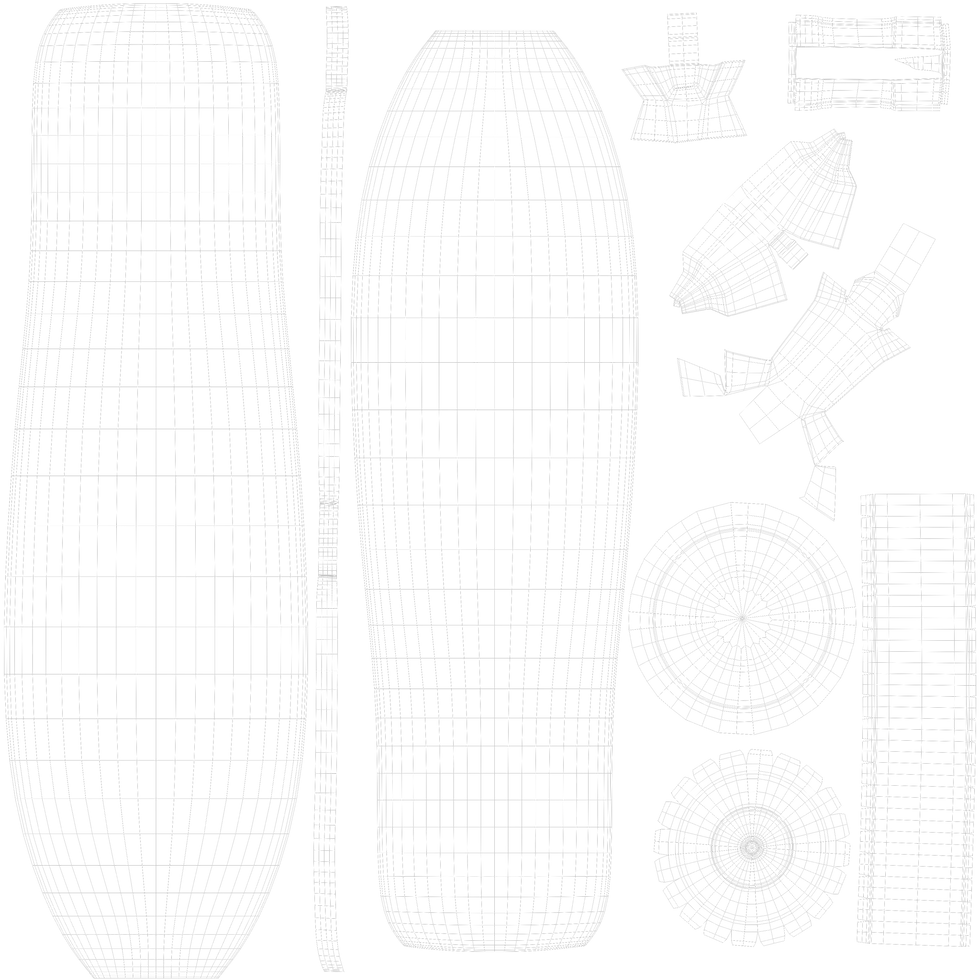
Anyway, texturing this was a blast. I absolutely loved it - I love my longboard and I've always wanted a custom deck with my own design on it of something that I really personally like, and this was my chance to do just that. As with the mouse and even mega man, I tried to add as much realisim to this board as I could. Obviously my toy model at home is pristine, but as with my real board at home, there's a lot of wear and tear. So I incorporated a number of techniques which I later used in the other two models to create a weathered look.
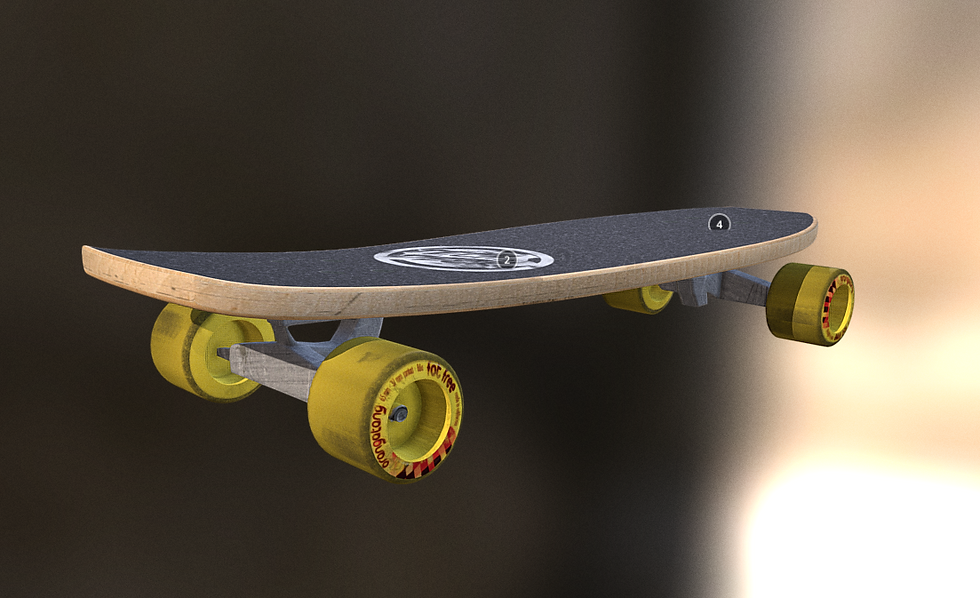

I had the most fun on the underside of the deck - I picked one of my all time favorite anime and went to town adding the beaten up look to the board.
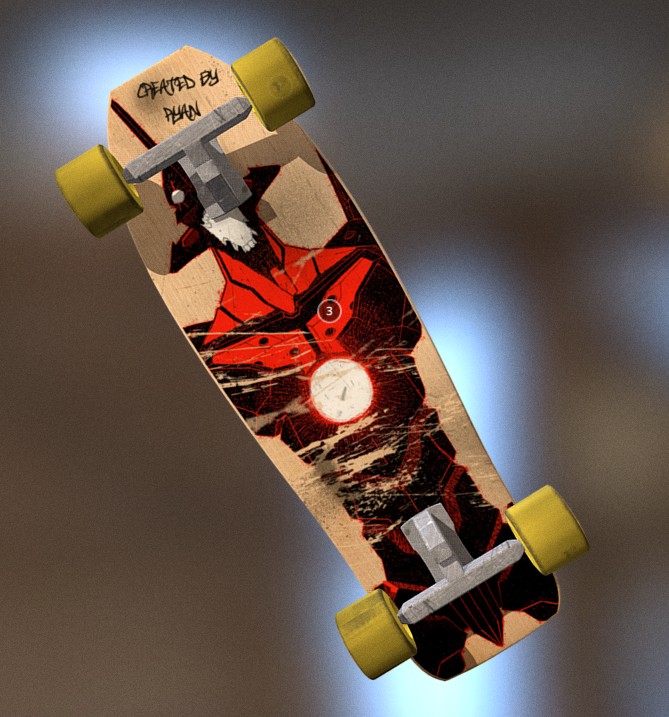
LINK: https://skfb.ly/6oyrA
So that's about it for work. I have a lot of ideas in my head to further my folio and contribute to my independent study, but only time will tell if I can actually get all that done. For instance, I really wanna make more board designs. Since I've already got the topology locked down (and it's water tight as with all my models!) I want to create heaps of personalized decks using my favourite designs and even designs of my own! I don't see why I can't include a collection of these in my portfolio then either as I feel it shows my ability to model as well as my ability to texture. So that's something I really wanna work on this tri if I can.
I also began modelling a fourth model for Nigel even though we only needed three. But it's something I really wanted to do yet in the end I didn't have the time to finish it - however, most of the topology is done already. In fact, I'll show you.
So this is based on an instrument that I have, which itself is based on a real instrument, yet stylized after the same instrument used in one of my favourite video games: the Ocarina of Time from the Legend of Zelda: Ocarina of Time.

This was a son of a bitch to do because of the holed in the ocarina. If I could just use squares, things would be easier, but trying to make it look realistic with circular holes inside square polys was a nightmare for mesh cleanup. Oh and thanks to general Maya issues, the following happened a lot. But to be fair, this doesn't just happen in this model, this happens to me as I'm sure with other people. All. The. Freakin. Time.
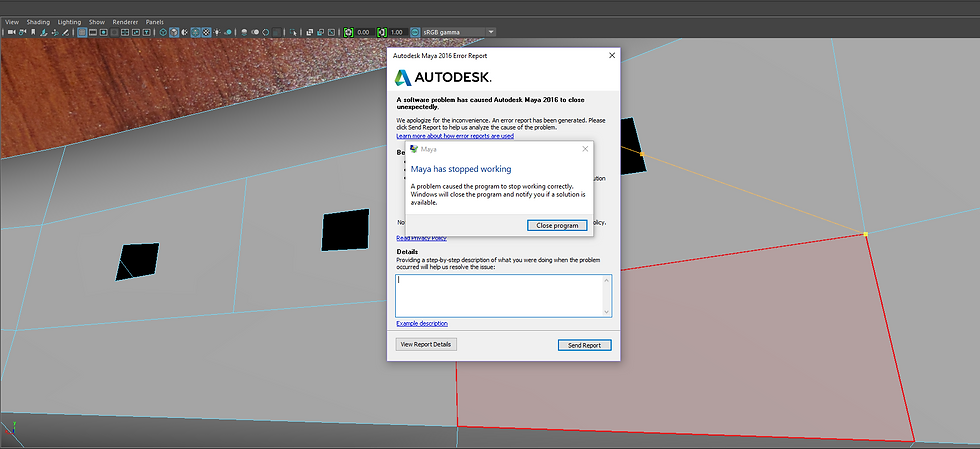
So I had to come up with a way to create the holes circular on the more squarish mesh, but everytime I switched to a smooth mode to predict what the final product would looks like, due to the placement of verts, the topology didn't line up with my reference. Because of this, I decided to continute modelling in the viewports 3, smoothed mesh mode. This of course gave me really terrible results when I went back into 1, normal mode, BUT I felt that it didn't matter, because eventually I was going to subdivide the mesh and end up with the way the model looked in the view port.
The problem with this, as with my mouse, is that I ended up with some irregularities on the mesh once I did subdivide. And trying to correct those irregularities even using lattice, is really very difficult because of all the nodes.

This is what I mean: I don't know if you can see from the picture, but that very small, top most hold in the ocarina causes the mesh to kinda warp upwards - this same warping issue occurs towards the bottom middle of the mesh and around the back part towards your right. This is a problem because I struggled trying to smooth this all out, but because this particular mesh is already sub divided, I can't go 'back' into a normal mode and I'm stuck working with many more verts and polys. I do have backups of my models (as I do with every model I make now) so that I have legacy versions to build upon - and so in the coming weeks, I hope to go back and finish this and add it to my portfolio.
Looking ahead, I have my list of tasks: I have to complete this blog which is nearly done, then I have to look at the camera sequencing for Studio because there's been some changes to the storyboard that i'm talking with Rob about. Then I need to work on Nigel's rig, which based on the first part, necessitates an entire day - I'm serious, I spent 4 hours on it the first time just to end up with a broken rig, so I had to do it all over again, this time taking 6 hours. That's so much time just for a rig! I don't even wanna be a rigger! I'll just download Advanced Skeleton! I joke, of course i understand the need to learnt he fundamentals. I had this same issue when I studied IT. I and the other kids in my class complained when we learned machine language and the binary/hexadecimal system. We all wondered "Why aren't we just learning high level languages like Java and C+?" And the teachers would say "It's because you need to know the fundamentals of computer language to appreciate and understand how we eventually ended up with advanced languages like Java". And you have this "ooohhh" moment, but you're still kinda pissed off that you're learning 3 different langues in one term.
I'm not sure where we'll be this week in our Studio 2/3 - based on the pipeline I expect texturing and camera sequencing to be finalised this coming week and into next week. I know rigging has been done for the cabinet and so I assume more rigging needs to be done for the typewriter, PC possible? In fact I'm not sure, are those being rigged? And last I heard, the secretary is being animated in 2D. I wonder who's doing that?
Well before that, I'm filming on Tuesday with my CIU group because we have that ol' chestnut of an assignment to complete. We're also doing a short film, except we only have a team of 5, not 15...so there's a LOT of work to be done there, but I'm kinda numb to it all now. I'm really just counting down the days until this term is over SUCCESSFULLY, and I go out and reward myself with a new Nintendo Switch.

I really, really want this game. I don't think you understand. In fact, without this lingering on my horizon, I'm not sure where my motivation would be at this moment. But knowing that I need to complete this term and do it well is all the reason I need to spoil myself when it's over.
Actually on that note, Phil - I don't know if you're willing to provide feedback on these blogs, but where do I need to be compared to where I am now, in order to really kill this unit? I'm really trying to do my best and while my best may not necessarily be dux of the class, I also would hate to end up with a passing grade. So if you have any feedback for me as to how to get myself closer to that top mark, I'm happy to take it on board and implement it whenever possible.
- Ryan.
Comments